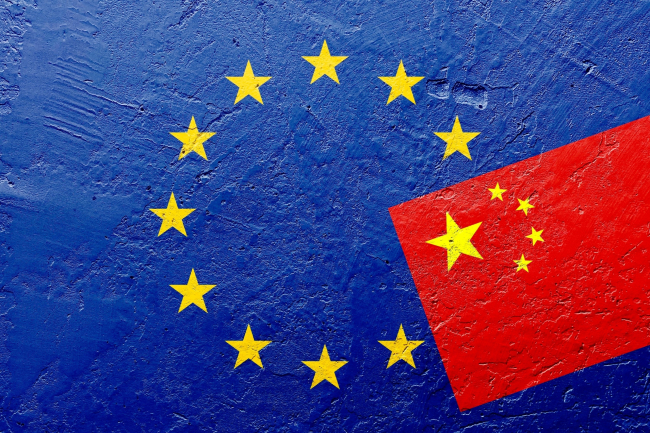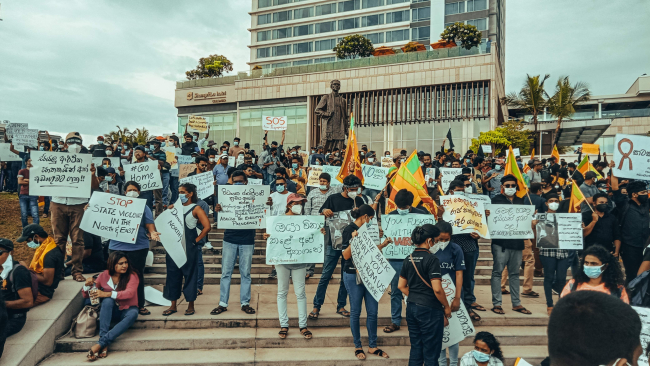The Jihadist Movements' Dual Nature

Jihadist Movements Worldwide
In order to better explain the possible evolution of United States' policy vis-à-vis Jihadist movements following the American presidential election, Dr. Walid Phares dedicated the first part of his speech to analyzing the dual nature of the Jihadist movements worldwide. The term "Jihadist" is another - mostly American- equivalent of Islamism, a term used in Europe and in the Middle East to define radical Islamic Fundamentalists.
Academically, the "Jihadist movements" can be explained through a two trees metaphor. The first tree is the Salafist one. We can not write it off to a "violent activist movement"; it is a global movement that has a common ideological vision of the world. This ideology, which emerged in the 1920s, has been metastasizing since the beginning of the cold war. Its long term objective is the establishment of a caliphate mainly through an indoctrination process and the spread of the ideology throughout societies and governments. These Global Salafists - Wahhabis in Arabia, the Muslim Brotherhood in Egypt and the Deobandis in the sub Indian continent - opposed the rise of modern and secular Arab and Muslim states and aimed at transforming them back into what was a Caliphate.
In early nineties, Dr. Phares observed a clash between two schools within the Global Jihadi Salafists; he coined it the "Khartoum debate." Many Salafist activists -including those Jihadists returning from the War in Afghanistan - claimed that the long term process of indoctrination and penetration of societies was not efficient enough. As a consequence, they chose to engage themselves in "direct Jihad" or warfare against their perceived global enemies. Al Qaeda is the most visible example of a movement that follows this doctrine. This warfare occurs in such lands as Chechnya, Sudan or Algeria, but it is also targeted against the United States and other democracies. The other Islamists continued to follow a long term strategy of indoctrination and the spreading of their ideology.
The second tree is the Khomeinist movement based out of the Iranian Islamic Republic. Even though Khomeinism is significantly different from Salafism, the Iranian regime and its followers in the region seek the establishment of a regional and, ultimately global, Imamate, another form of Caliphate, led by the Shia. The Khomeinists have demonstrated a major difference with the first tree with regard to their organization and strategic discipline. Their movement is centralized and the main strategic decisions are made by the Iranian supreme leaders. The chain of execution is integrated and is carried out by the Pasdaran (Islamic Revolutionary Guards), and through them via Hezbollah in Lebanon and its networks spread throughout the world. The Lebanese Diaspora is an important vehicle to these networks. This Khomeinist (Shia) tree also has significant influence on radical Sunni groups, such as Hamas in Gaza, and other Islamists in Lebanon, thanks to the power of Iranian petrodollars. Whereas the Salafi Jihadi movement relies on the vast and dispersed pools of indoctrinated youth around the world, including those in the madrassas, the Khomeinist movement evolves around the Iranian regime strictly.
Counterterrorism Policy in the United States
One cannot adopt the same counterterrorism strategies to address both trees. Whereas the answer to the second tree is linked to geopolitical equations with Hamas, Iran or Hezbollah - which use terrorism within a balance of power and under a clear hierarchy of structures - the situation is more complex for Salafist movements. With the latter, counter-strategies involve identifying them, localizing them and acting on their funding as well.
From 2001 to 2006, in the war on terror's framework, the Bush administration has been engaged by both trees. That is to say that the American and international coalition have been confronting the Taliban in Afghanistan in order to protect the elected government. At the same time, U.S. and allied forces have been engaged in Iraq to remove the Saddam Hussein regime, set up a democratic government to preserve its stability by fighting al Qaeda in the center and containing the infiltrations by Iran, Hezbollah and Syria in other areas.
In a parallel course to these two military interventions, a soft diplomatic campaign has been put in place: a Strategic Communication policy aiming to sweep the Arab public opinion towards democracy and rejection of extremism.
A major change occurred in 2006 when Democrats gained a majority in the U.S. Congress; it has driven some major evolutions in the American fight against terrorism, with two trends that have emerged. The first one, followed by the Administration, is to pursue the current massive effort in the two conflict areas: Afghanistan and Iraq and attempt to gain influence among local allies on the ground such as the tribes and local politicians. The other trend, which was advanced by elements in some conservative circles opposed to the war and large segments within the Democratic Party, advocates a withdrawal from the battlefields and a dialogue with the radicals in the region such as with the Iranian and Syrian regimes as well as with those non al Qaeda Jihadists and Islamists.
The next presidential election is going to give predominance to one or the other.
The Changing American Presidency's Impact on Counterterrorism Policy
Dr. Walid Phares, in the third part of his speech, developed his views of the possible evolution of American counterterrorism policy based on which candidate ultimately will succeed.
First, he referred to the changing situation that might bring about the election of Barack Obama as President of the United States. The evolution would be slow at first, due to the fact that most of the new White House staff would be from among those who worked under the Clinton mandate. He will backed by a Democrat majority in Congress while bureaucracies in the military and diplomacy sectors will remain. The first half of the first mandate would be devoted to new statements about American foreign policy and the American position on terrorism. The second half would allow a first big shot delivered by American diplomats in the Middle East. In Iraq, we would see a gradual pullout and there would be some talks with Iran and Syria. Redeployment would be launched in order to satisfy these two regional powers. According to the speaker, a dramatic change towards more ideological assertions would occur during the second mandate if Obama wins it. The most dramatic changes away from the War on Terror will take place after re-election.
Then, Dr. Phares referred to the changing situation that might come with the election of John McCain as President of the United States. We can sum it up with the following: "same general direction, but different approaches". The US forces' presence in Iraq will go on due to the insurgents' activities. Most of the Administration's bureaucracies will remain the same with exceptions. The attitude of John McCain vis à vis the Middle East will depend on the decisions made by various regional forces.
To conclude, we should not underestimate the civil society's evolution within Middle Eastern countries, which is not always reflected by Al Manar or Al Jazeera but also not by chat rooms, websites and forums on Internet. Even if Western media mostly reports violence and anti-Western attitudes, there is a deep evolution of civil societies towards more democracy. This evolution will depend on how authoritarian governments would react. Will they fiercely oppose the movement or will they reform?
IFRI's ‘s Tuesday lunch was concluded with an animated debate between the speaker and the audience on questions regarding NATO strategy in Afghanistan, the Muslim Brotherhood and the South East Muslim identity.
Related centers and programs
Discover our other research centers and programsFind out more
Discover all our analyses
Opening up the G7 to South Korea to Address Contemporary Global Challenges
The G7’s global influence has diminished as powers like China reshape international governance through initiatives such as BRICS and the Shanghai Cooperation Organisation (SCO). With the G7 now representing just 10 per cent of the world’s population and 28 per cent of global GDP, its relevance is increasingly questioned.
Expanding SPDMM as a pivotal institution in the Pacific – A French perspective
The South Pacific Defence Ministers’ Meeting (SPDMM) is the only forum that brings together defense ministers from the wider South Pacific — including Chile, which is hosting it for the first time. This heterogeneous group of countries with varying resources, capacities, and interests — Australia, Chile, Fiji, France, New Zealand, Papua New Guinea (PNG), and Tonga — are united by their shared determination to strengthen cooperation on maritime security and humanitarian assistance and disaster relief (HADR) activities.
EU’s Derisking From China: A Daunting Task
With economic security as a major concern, the EU has recently turned to “derisking” from China. The EU strategy entails reducing critical dependencies and vulnerabilities, including in EU supply chains, and diversifying where necessary, while recognizing the importance and need to maintain open channels of communication.
Sri Lanka’s NPP Government. From System Change to Structural Compliance
In September 2024, a relative outsider to Sri Lanka’s two-party-dominated political system, Anura Kumara Dissanayake, won the presidential elections. The anti-establishment, populist movement he represented, the National People’s Power (NPP), went on to receive an overwhelming mandate in the November 2024 general elections, winning 159 seats in a 225-member parliament.









